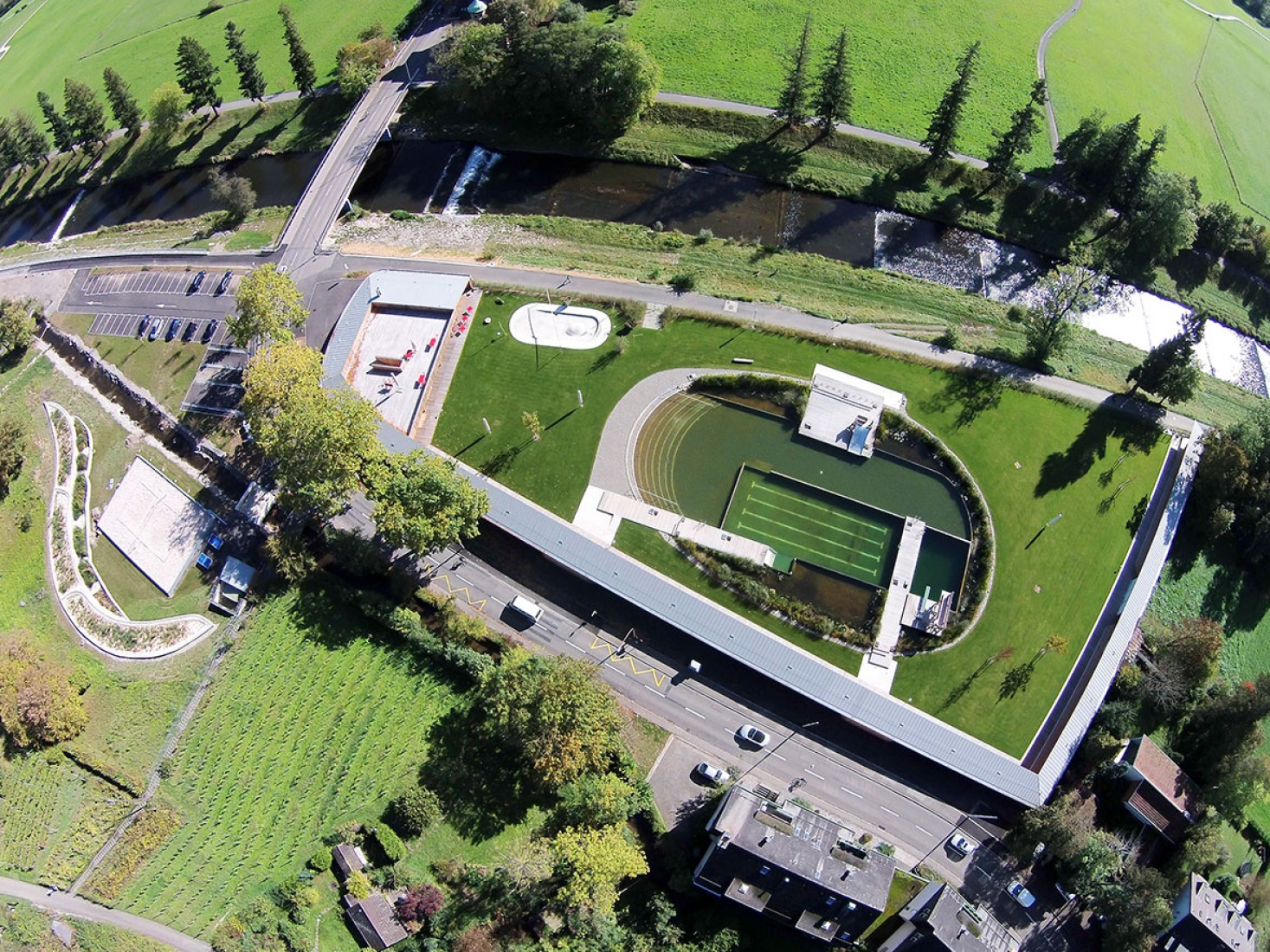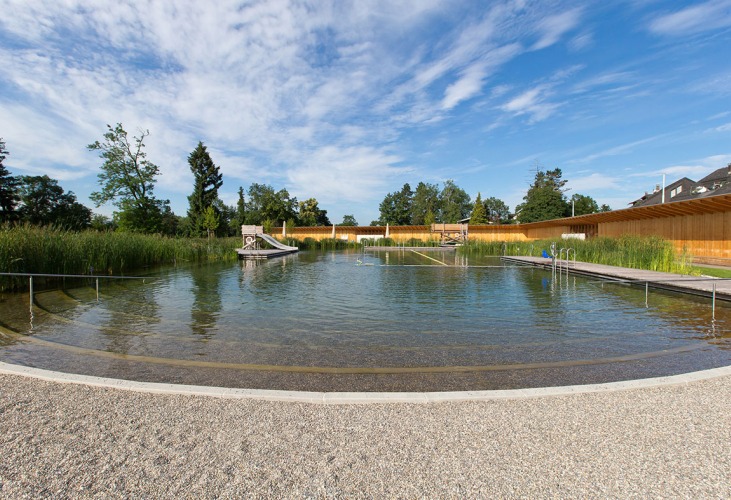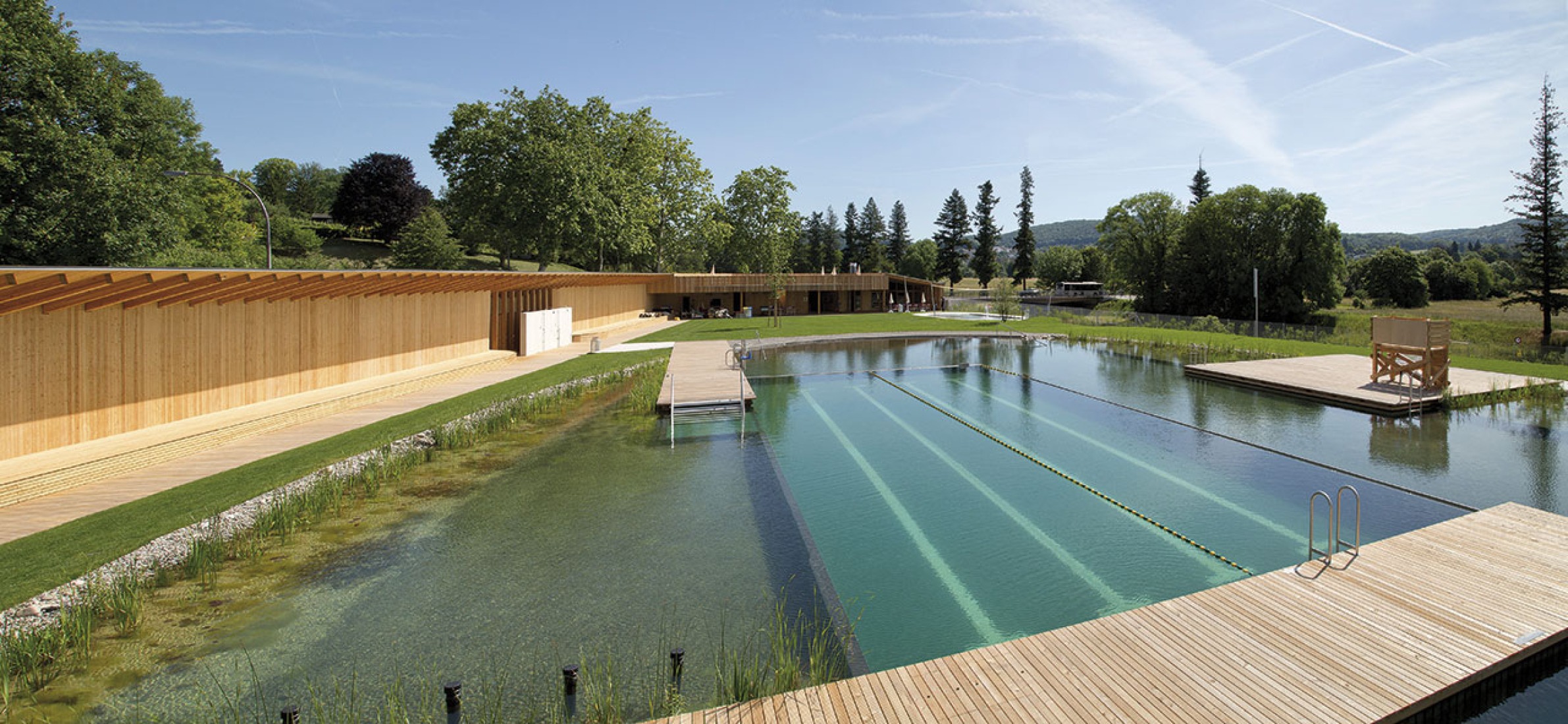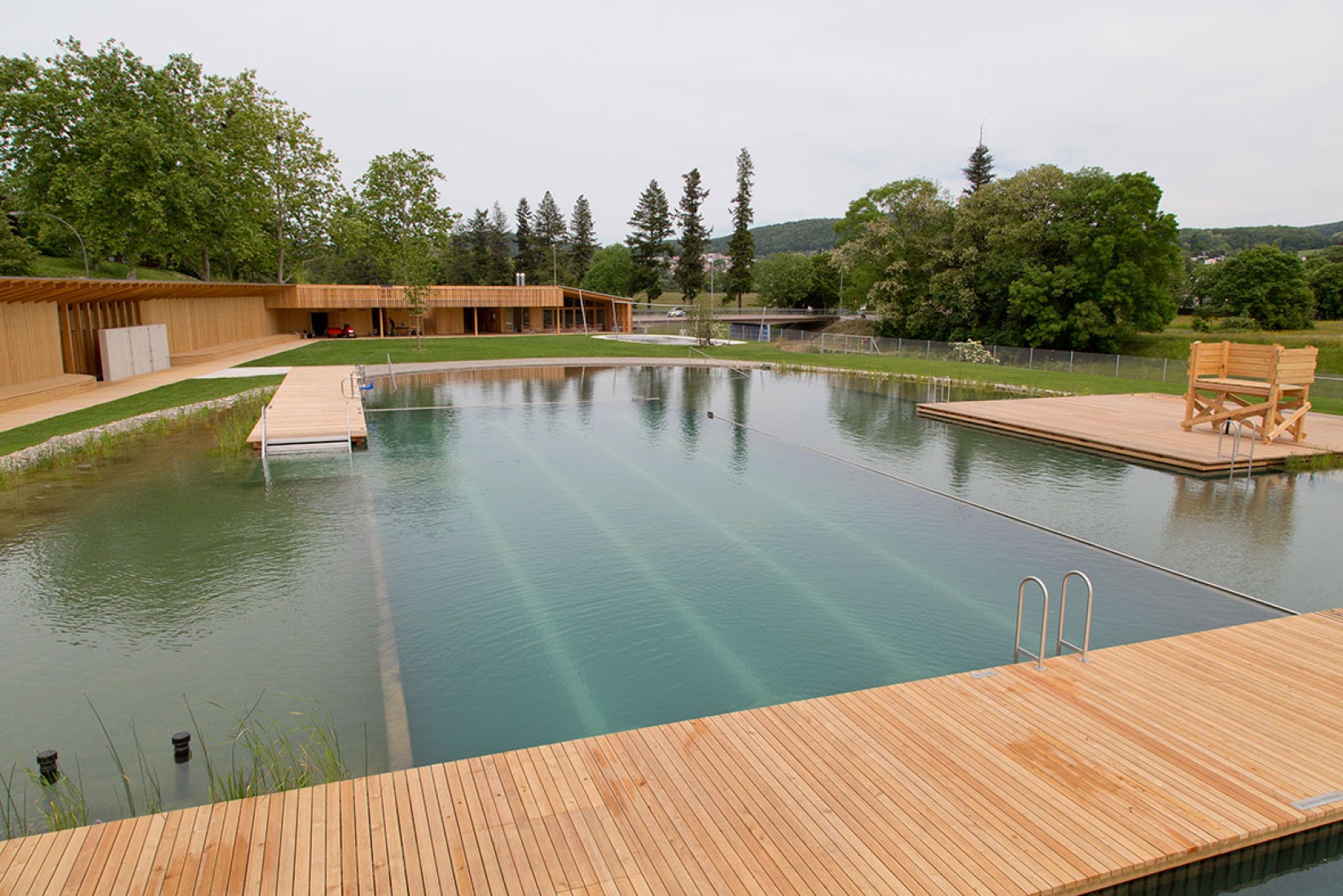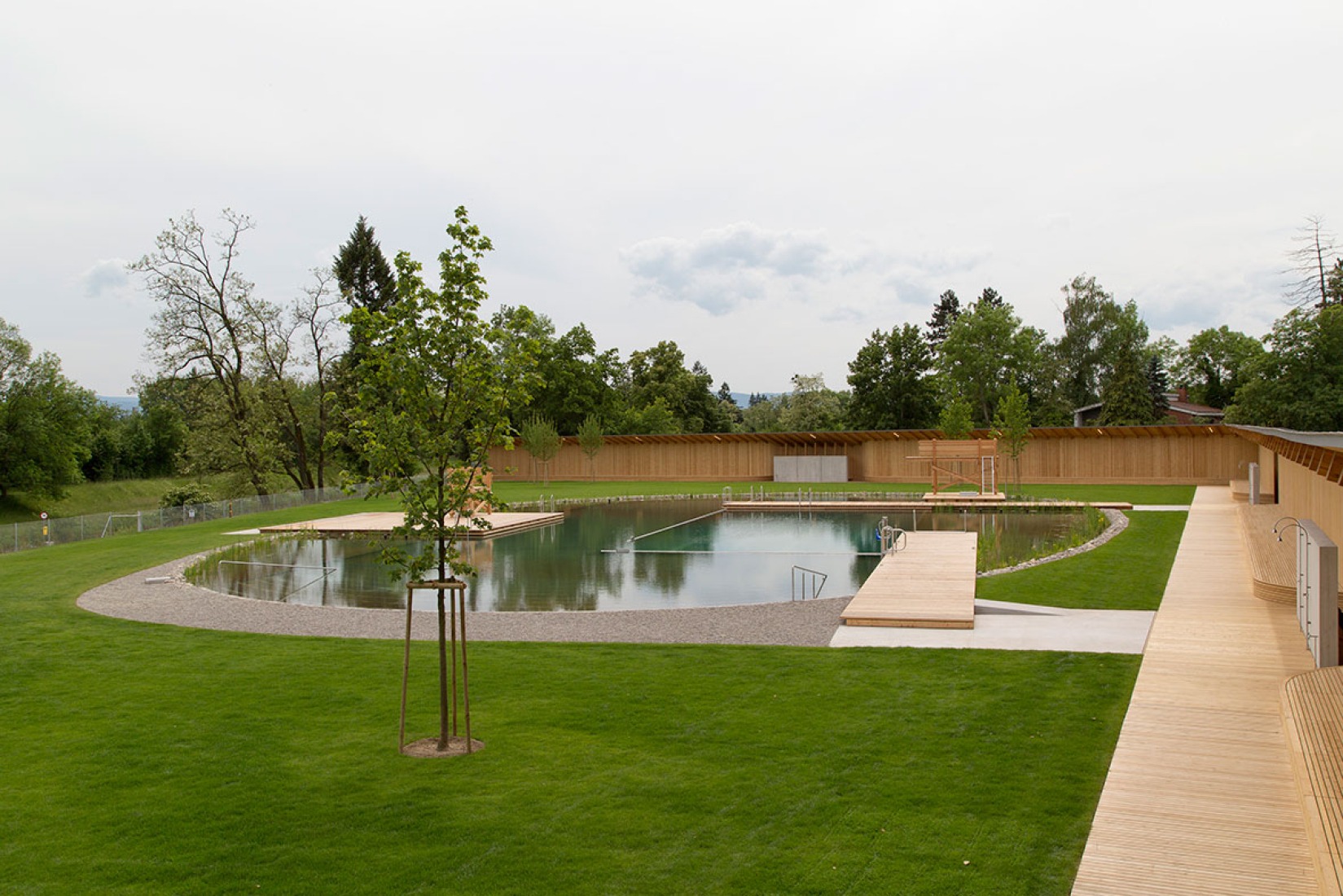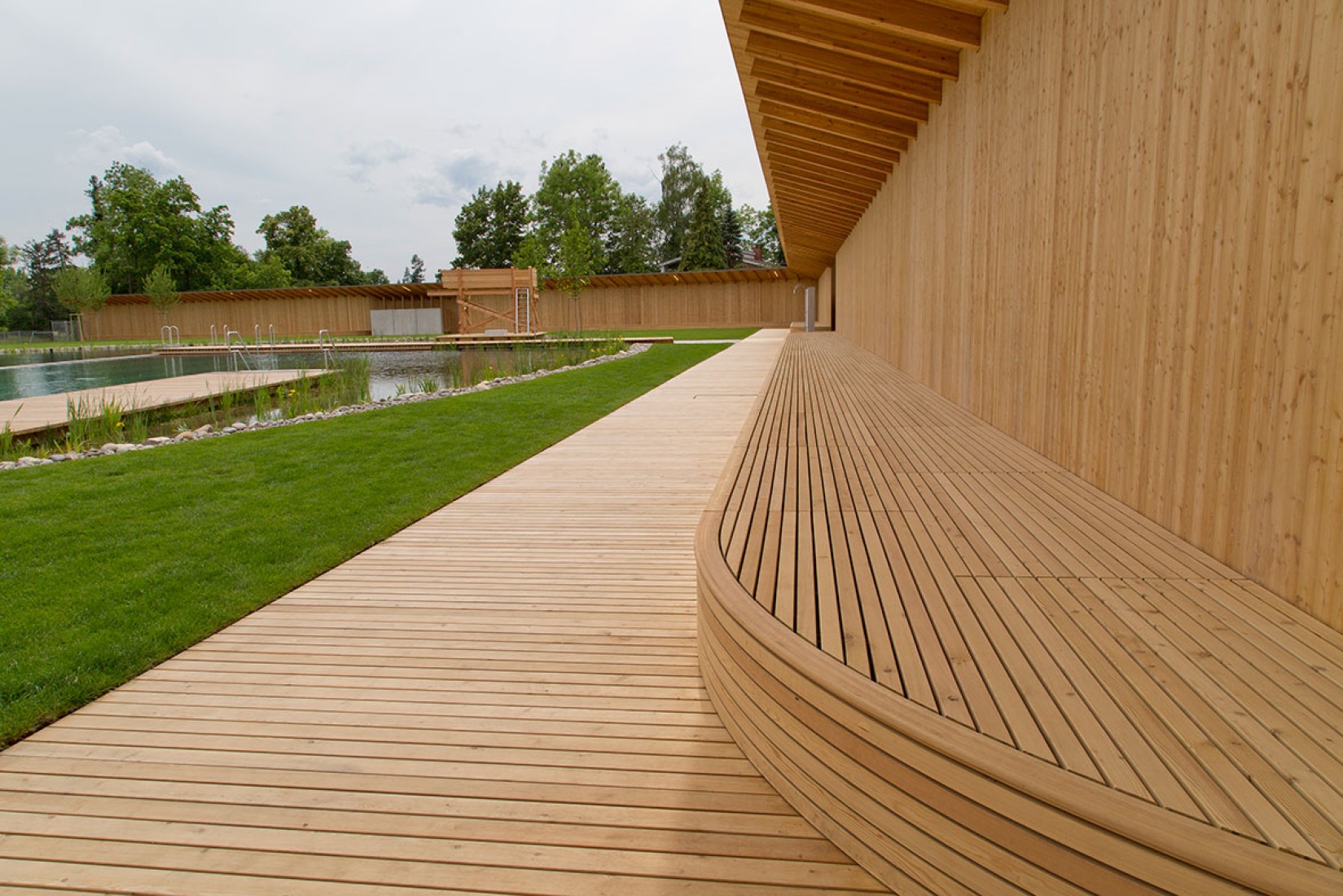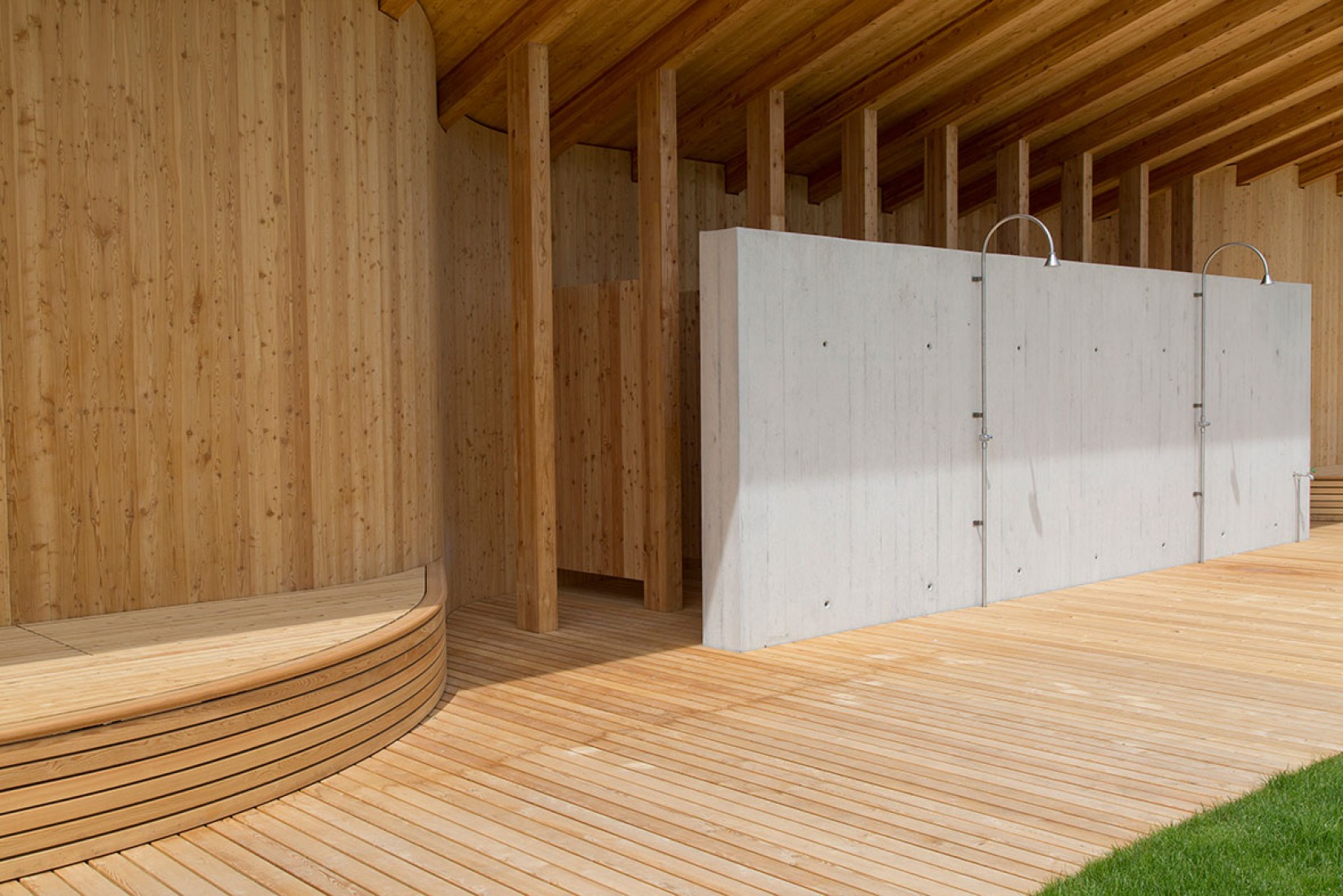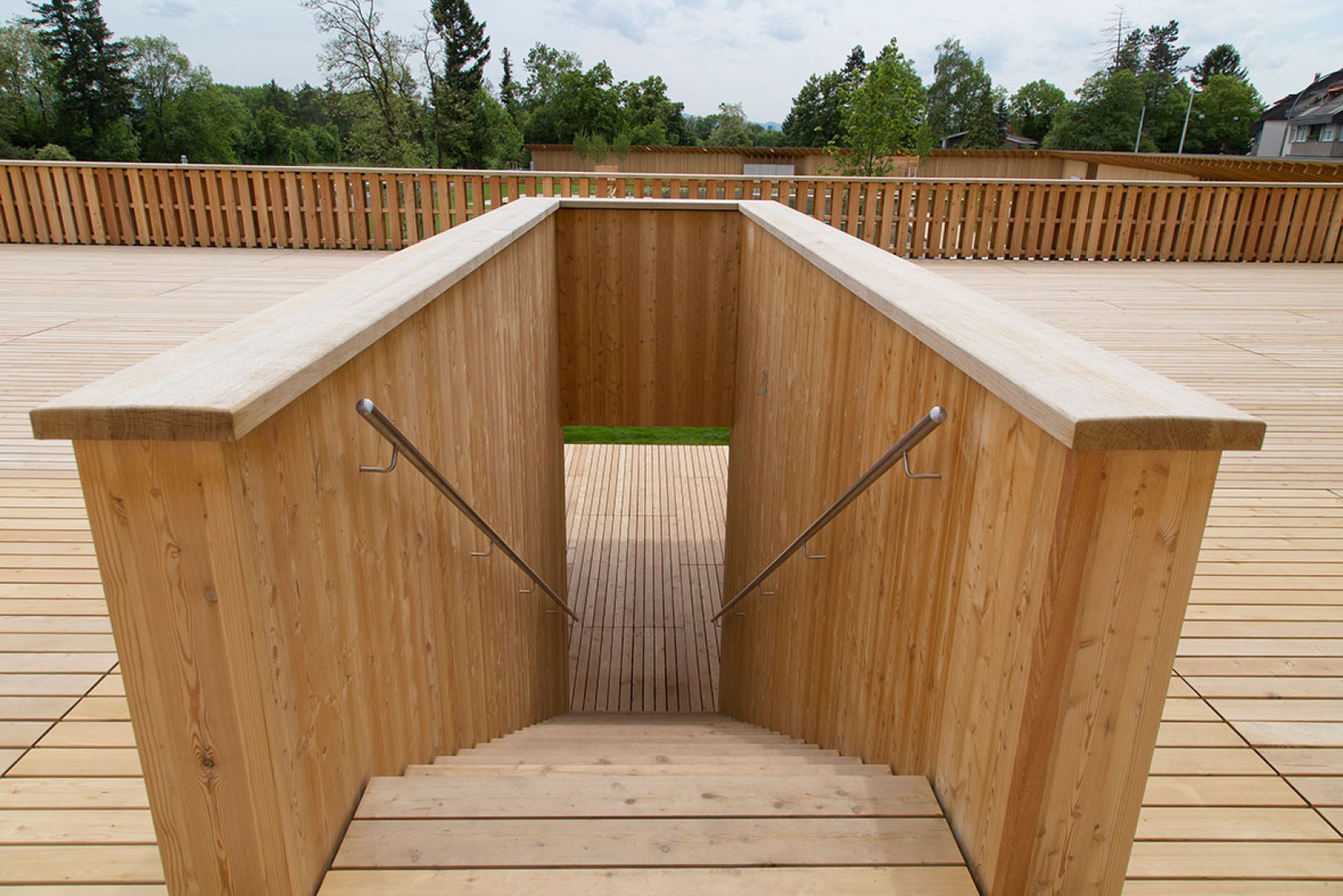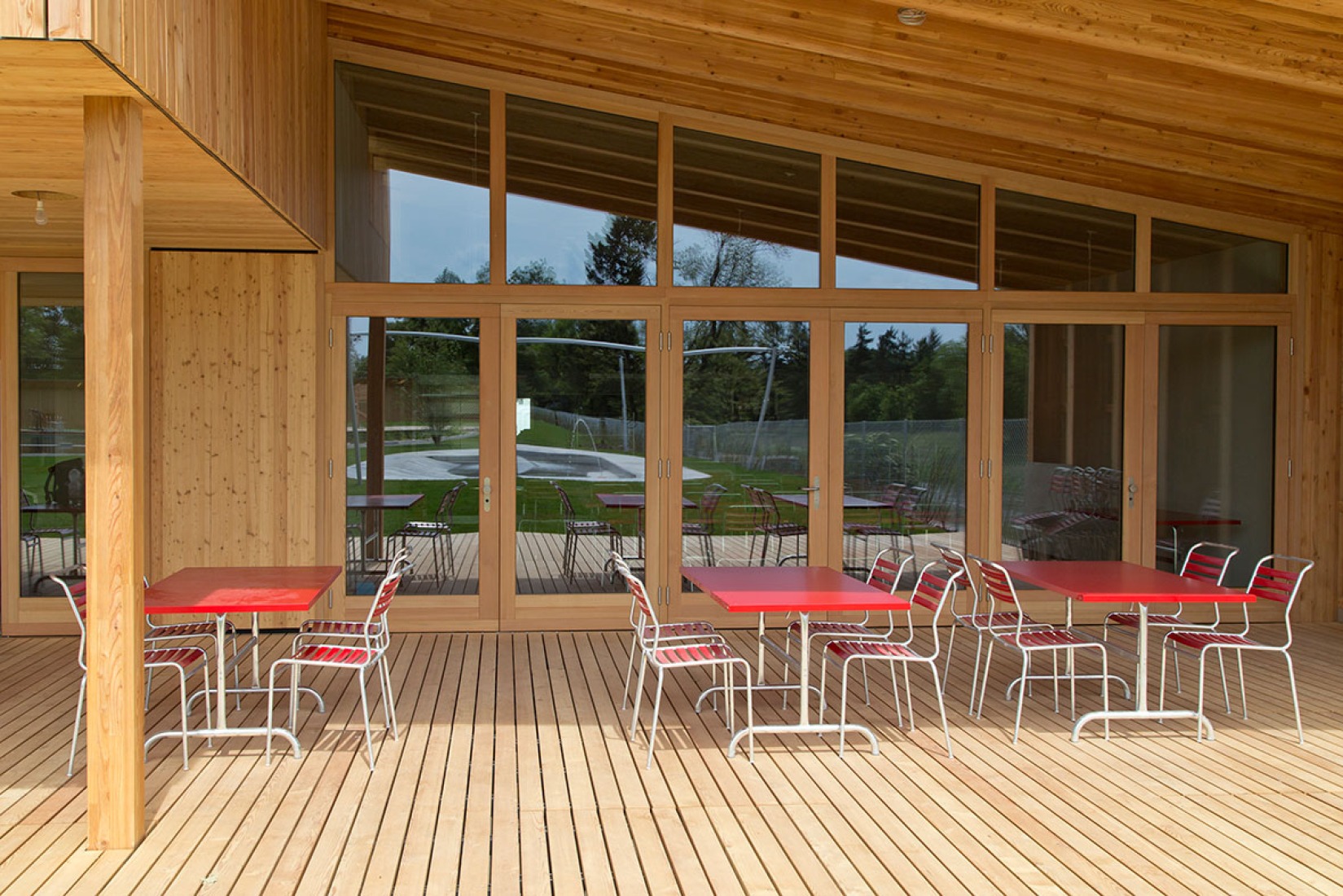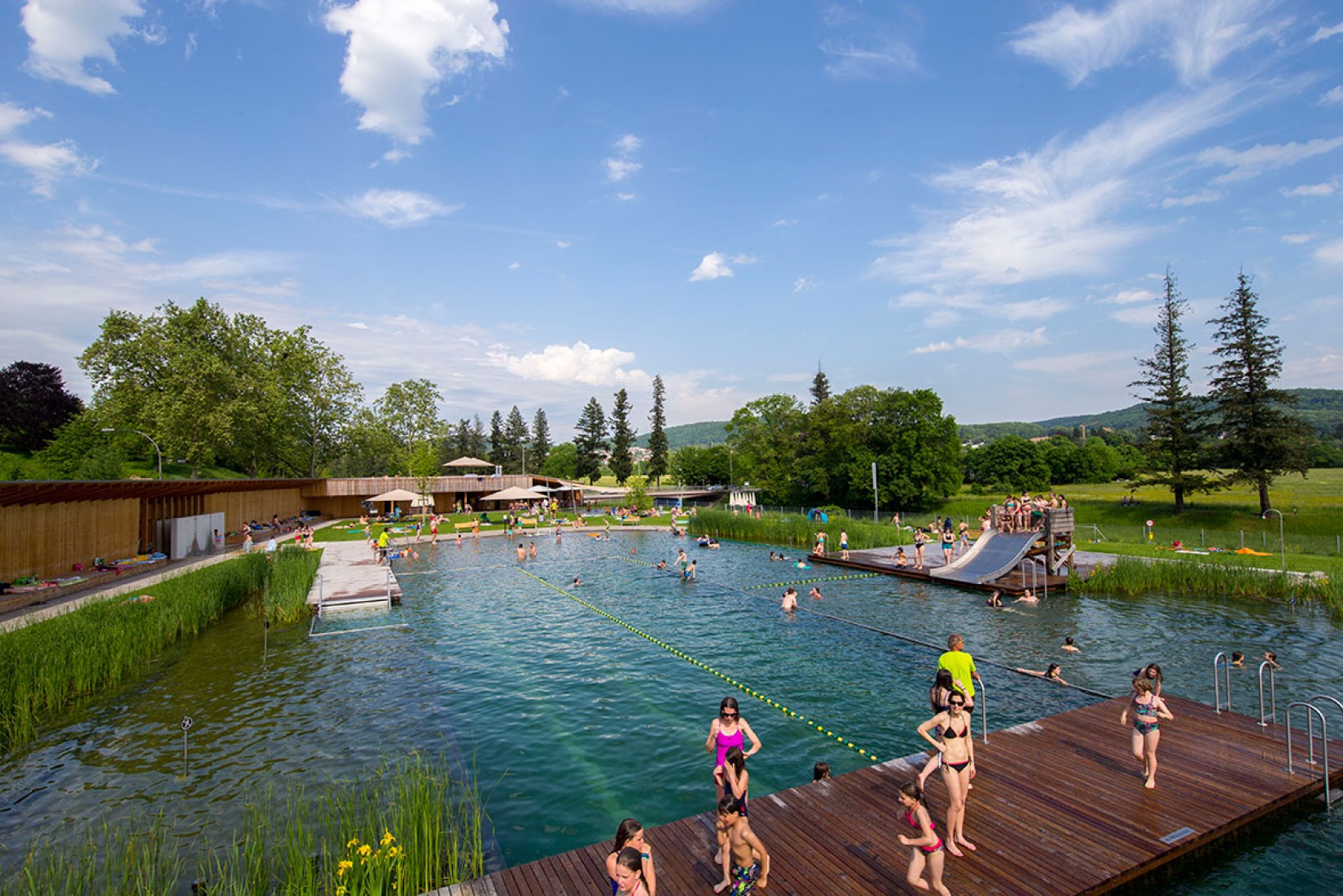With the idea of satisfying the demands of the locals to have a new public swimming pool to replace the baths by the riverbank, Herzog & de Meuron studio started to think about the options for a new bathroom facility. Due to its geographical context, they chose a concept of natural pool, where mechanical and chemical treatment elements are replaced by natural filtering systems. Besides the swimming pool, the project includes a facilities building and a solarium area.
Trying to make the current heat wave a little more bearable, we present this natural swimming pool designed by Herzog & de Meuron in the town of Riehen, in the outskirts of Basel.
Description of the project by Herzog & de Meuron
The Swiss municipality of Riehen, bordering the city of Basel, lies in the gently widening valley of the River Wiese, near to its confluence with the Rhine. For decades, the local population has yearned for a new public swimming pool to replace the obsolescent baths by the riverbank, with various attempts having failed. After winning a design competition in 1979 and several unrealised projects in the following years, Herzog & de Meuron again started to ponder the options for a new bathing facility. The changed perspectives brought by the intervening years prompted the idea of abandoning the conventional pool concept with its mechanical and chemical water treatment systems in favour of a pool closer to a natural condition with biological filtration. This approach was publicly discussed by the citizens of Riehen and officially approved by a municipal vote. The standard geometric swimming pool transforms into a bathing lake where the technical systems and machine rooms vanish, to be substituted by planted filtering cascades. This concept led to the notion of modelling the natural pool on the local “Badi”, Basel’s traditional wooden Rhine-side baths, which combine a lively atmosphere with a timeless appearance.
The site is screened on two sides by an enclosing timber wall: on the north towards the road and on to the west from adjoining private properties. The southern perimeter facing the river, on the other hand, is open, bounded only by a green hedge. On the eastern front, a timber fence merges into the amenities building, which incorporates the entrance and supporting facilities, while the wall along the northern and western boundaries offers a 200 m long sheltered solarium with recliners. Yet, from all parts of the facility, attention is focused on the bathing pond at the centre of the site. The biological water treatment basins – the non-mechanical “heart” of the baths – are embedded in the sloping landscape on the opposite side of the road. Together with various leisure facilities provided here, they form a recreational area open all year round to the municipal population. In terms of ecological cleaning capacity, the baths are designed to accommodate 2 000 bathers per day.
More information
Published on:
July 4, 2016
Cite:
"Naturbad Riehen, a natural swimming pool by Herzog & De Meuron" METALOCUS.
Accessed
<http://www.metalocus.es/en/news/naturbad-riehen-a-natural-swimming-pool-herzog-de-meuron>
ISSN 1139-6415
Loading content ...
Loading content ...
Loading content ...
Loading content ...
Loading content ...
Loading content ...
Loading content ...
Loading content ...
Loading content ...
Loading content ...
Loading content ...
Loading content ...
Loading content ...
Loading content ...
Loading content ...
Loading content ...
Loading content ...
Loading content ...
Loading content ...
Loading content ...
Loading content ...
Loading content ...
Loading content ...
Loading content ...
Loading content ...
Loading content ...
Loading content ...
Loading content ...
Loading content ...
Loading content ...
Loading content ...
Loading content ...
Loading content ...
Loading content ...
Loading content ...
Loading content ...
Loading content ...
Loading content ...
Loading content ...
Loading content ...
Loading content ...
Loading content ...
Loading content ...
Loading content ...
Loading content ...
Loading content ...
Loading content ...
Loading content ...
Loading content ...
Loading content ...
Loading content ...
Loading content ...
Loading content ...
Loading content ...

